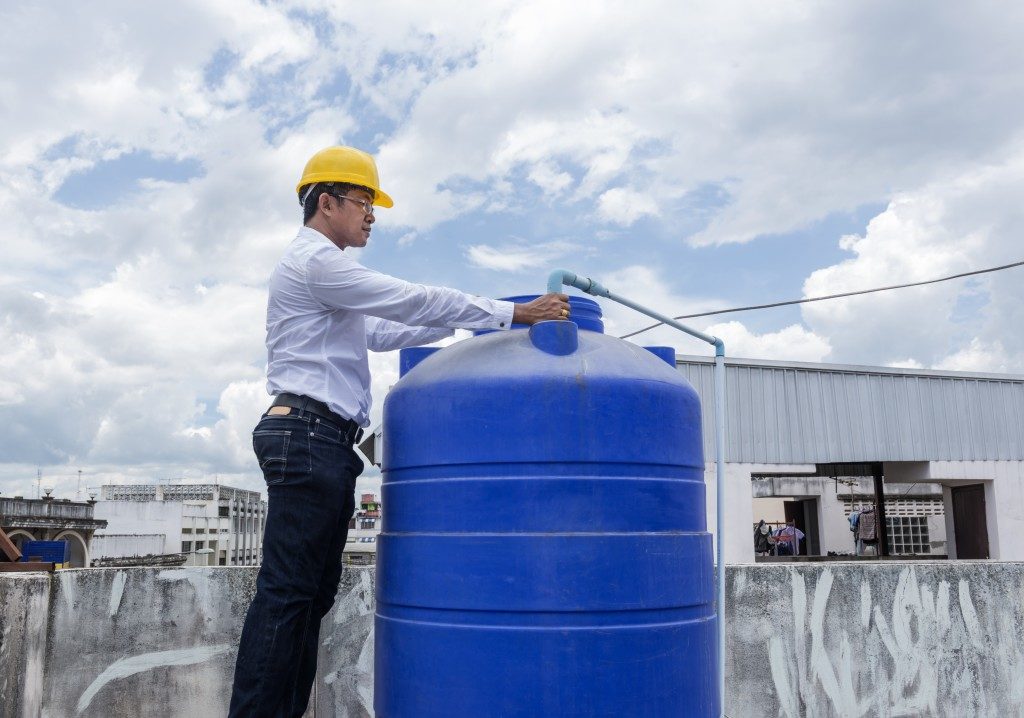Above ground storage tanks are heavily used in many industries, including the petrochemical, food and beverage, manufacturing, and pharmaceutical industries. They are built for containing different types of liquids such as potable water, fuel, and chemicals, while some industrial tanks are made for storing cryogenic fluids like liquid hydrogen and liquid helium.
Because storage tanks are usually located outdoors, they are constantly exposed to changing weather conditions and harsh elements. Rain, high temperature, and salt can cause damage to the tank’s outer shell and lead to corrosion. This is why having a regular tank inspection and maintenance program in place is important to reduce tank damage and substance contamination.
One way to protect storage tanks from is the application of industrial tank painting on its exterior. Here’s a quick look at how industrial storage tank painting and coating are applied.
Tank Inspection
If the storage tank has been used for some time and it is scheduled for re-painting or rehabilitation, its existing condition needs to be inspected first. Tank inspection will determine if there is external corrosion, internal contamination, or if there are areas that need to be repaired.
Surface Preparation
Surface preparation is an essential step prior to the application of coating or painting and it is used to clear the surface of any pre-existing coating, oxidation, residue, and other contaminants. Coating quality and performance is influenced by how well the surface is treated and cleaned. The slightest trace of surface contaminants such as oil and oxides can reduce the adhesive properties of the coating applied. Below are some of the common surface preparation methods:
- Chemical Cleaning: Organic solvents or detergents are used to remove dirt, oil, grease, and other foreign material.
- Tool Cleaning: Hand tool or power tools are used to remove loosely adhering rust or paint.
- Water Cleaning: Fresh water is used to remove salts, loose paint, and other contaminants.
- Abrasive Blasting or Sandblasting: Compressed air stream is propelled onto the surface to remove impurities, mill scale, rust, and old paint.
Specification Check
 Before the whole tank is coated, incremental tests are done on individual tank panels. Different types of coatings are applied and then tested under controlled conditions to determine which coating material will be able to stand against air temperature, humidity, and other environmental conditions that may affect the coating process.
Before the whole tank is coated, incremental tests are done on individual tank panels. Different types of coatings are applied and then tested under controlled conditions to determine which coating material will be able to stand against air temperature, humidity, and other environmental conditions that may affect the coating process.
After the above steps are completed, the tank is then coated on-site. Typically, two layers of coating are applied, a primer and then followed by the top coat.
Benefits of Industrial Tank Coating
- Corrosion Protection and Chemical Resistance: Coating protects tanks from exposure to elements that may accelerate the formation of rust and erosion.
- Leak Prevention and Crack Bridging: Coating increases the strength of the tank’s shell, preventing leakage that may be hazardous to the workplace and employees.
- Cost-Efficiency: Coating extends the life of the storage tank, reducing maintenance, repair, or replacement costs.
Storage tanks need regular maintenance checks to make sure that they remain in good condition. Part of this is ensuring that the tank’s coating is properly applied so it will be protected from wear and tear and exposure to different elements.


